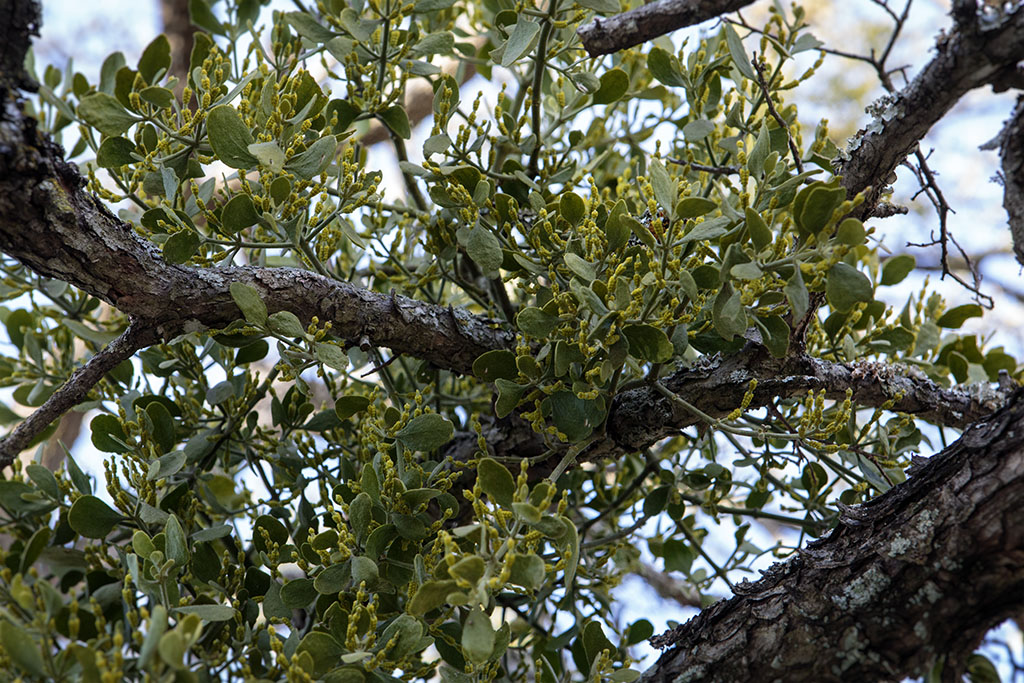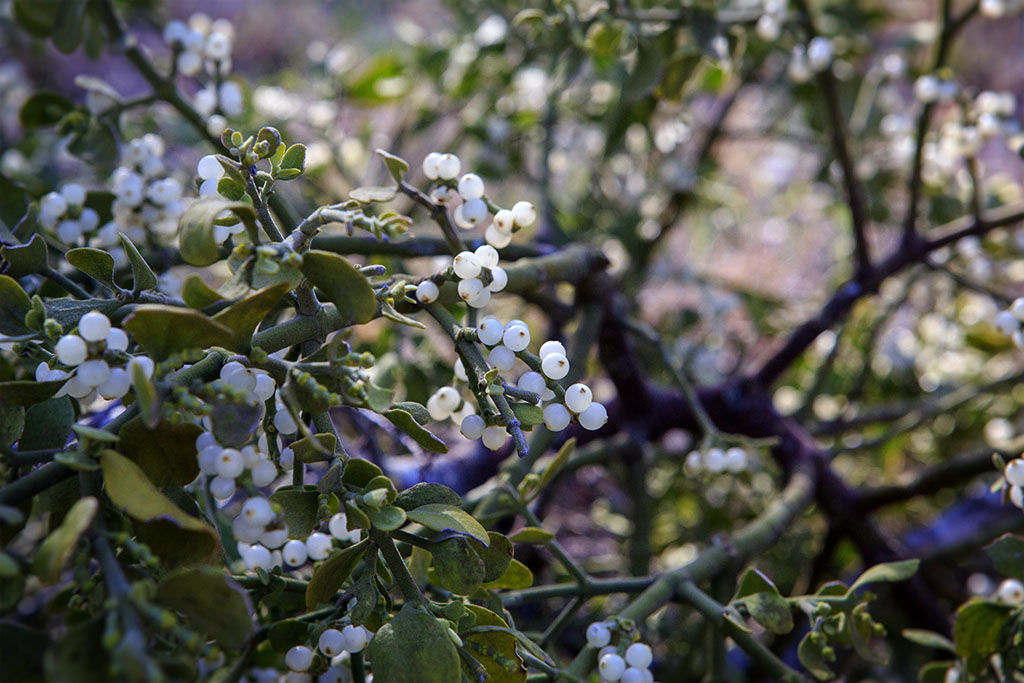Blame It On The Mistletoe
The mistletoe is very noticeable right now. Our cedar elms (Ulmus crassifolia) have lost all their leaves, so what remains green is the mistletoe.
I think the mistletoe is in the live oaks (Quercus virginiana) too, but it’s much harder to see since the live oaks have their leaves.
Mistletoe is a parasite and draws water and nutrients from the host tree. It’s not normally a problem, but can overwhelm and finish off an already weakened tree.
Here’s a clump of it in the branches of a cedar elm. The long, yellow-green spikes are the flowers.
Here’s a close up of the white berries. The plant is mostly spread by birds which eat the berries, also known as drupes.
It has recently been recognized as an ecological keystone species which means it has a disproportionate and pervasive influence throughout a community. Many animals rely on it for food.
It’s not clear how our tradition of kissing under the mistletoe originated, but the earliest documented case of kissing under it comes from 16th century England. I’m sure part of its mystical associations come from the fact that it’s one of the few plants which remain green through the winter. That makes is a handy Christmas decoration too.



Comments
Blame It On The Mistletoe — No Comments
HTML tags allowed in your comment: <a href="" title=""> <abbr title=""> <acronym title=""> <b> <blockquote cite=""> <cite> <code> <del datetime=""> <em> <i> <q cite=""> <s> <strike> <strong>